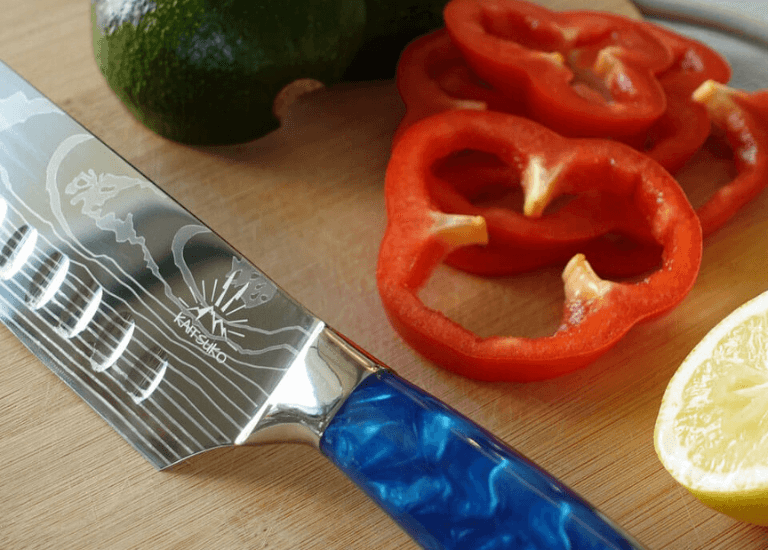The specific use of each knife depending on its use
Today you will discover which knives to borrow depending on your use!
The bread knife
The bread knife has a narrow, long, rigid and serrated blade. Its serrated blade is ideal for cutting easily and obtaining a very clean cut of all types of bread including those with a hard and thick crust.
It will also be the best knife for cutting brioches, sponge cakes, or even pizzas without tearing them. It can also be essential for cutting fruits and vegetables with hard and thick skin such as pineapple or melon.
The chef's knife
 The chef's knife is the universal and essential knife to have in your kitchen.
The chef's knife is the universal and essential knife to have in your kitchen.
It features a stiff, smooth, sharp blade perfect for spectacular precision.
This is the ideal knife for cutting large pieces of meat such as leg of lamb or roast pork. It also allows you to slice precisely and cut foods into thin slices such as leeks to be sliced or carrots to be prepared in julienne.
The Santoku knife
The Santoku knife is the Japanese equivalent of the chef's knife in Europe. It is a knife with three main virtues: cutting, slicing and chopping.
It is a multi-purpose knife with a dimpled, pointed blade that is slightly curved at the end.
Its perfectly smooth blade is ideal for easily cutting your food, chopping herbs, cutting vegetables and meats, as well as slicing and mincing your raw fish and preparing very good sashimi or maki!
In addition, the shape of the blade is designed so that food does not stick to it when cutting.
The paring knife
It is the most used, but also the smallest, because its blade, which is a little wide and very pointed, is used to cut herbs, potatoes, onions, carrots or other fruits and vegetables.
The boning knife
It is small, its blade is quite thin, short and narrow, which It is mainly used for boning or removing nerves. But also to remove tendons and fat from all types of poultry or meat.
The Nakiri Knife
The Nakiri , mainly used to chop herbs and vegetables without breaking them, is most often found in Japanese homes.
The Nakiri can also make all kinds of cuts such as: strips, slices, large and small dice, shavings, etc.







Behind the scenes of our advertising shoot
What is Damascus steel? Why choose knives made of this steel?